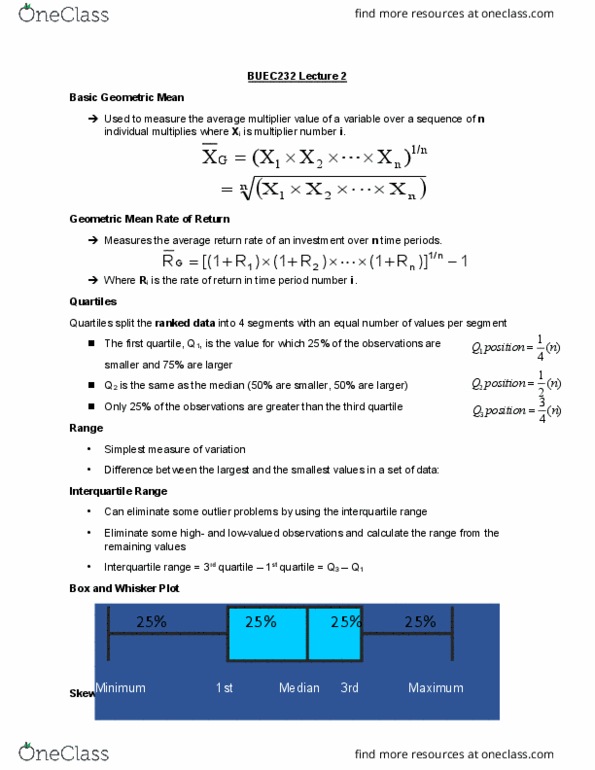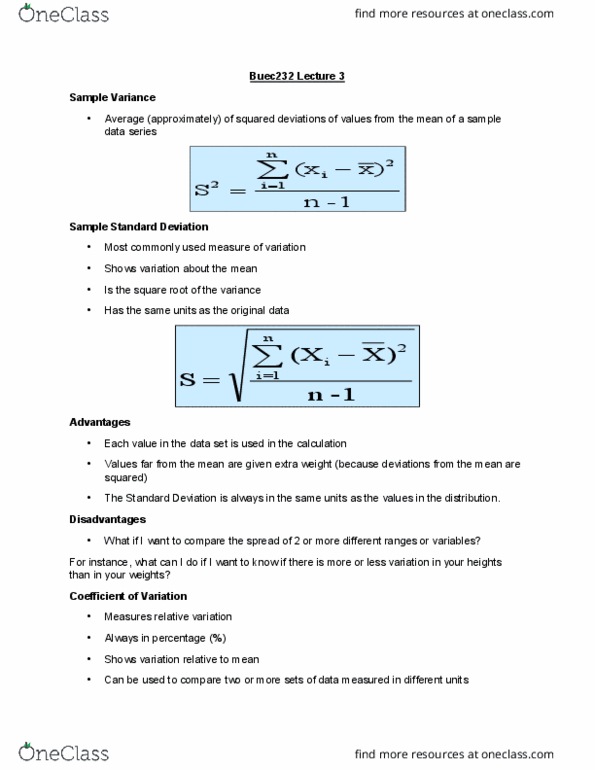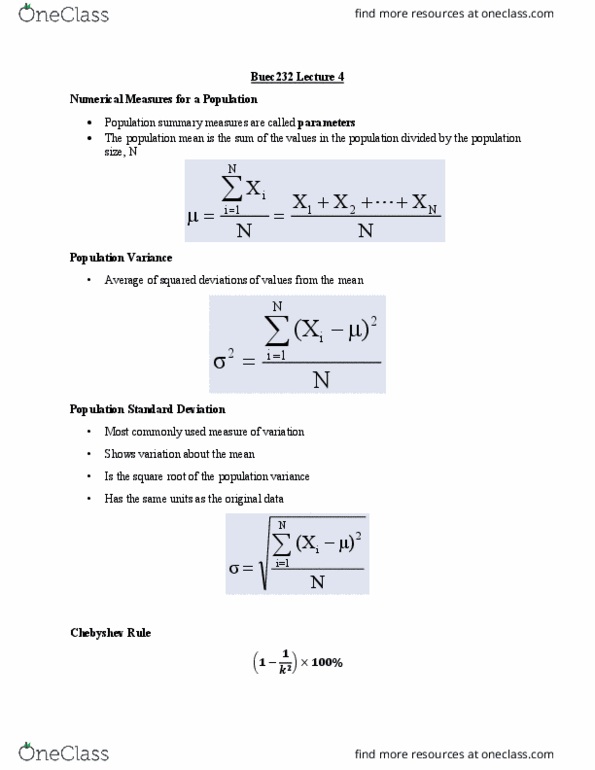BUEC 232 Lecture 2: Lecture 2
BUEC 232 verified notes
2/7View all
Document Summary
Used to measure the average multiplier value of a variable over a sequence of n individual multiplies where xi is multiplier number i. Measures the average return rate of an investment over n time periods. n/1. Where ri is the rate of return in time period number i. Quartiles split the ranked data into 4 segments with an equal number of values per segment. The first quartile, q1, is the value for which 25% of the observations are smaller and 75% are larger. Q2 is the same as the median (50% are smaller, 50% are larger) Only 25% of the observations are greater than the third quartile. Range: simplest measure of variation, difference between the largest and the smallest values in a set of data: 4 n n n: can eliminate some outlier problems by using the interquartile range, eliminate some high- and low-valued observations and calculate the range from the remaining values.




